Diageo's recent innovations get your favourite drinks on the shelves more efficiently
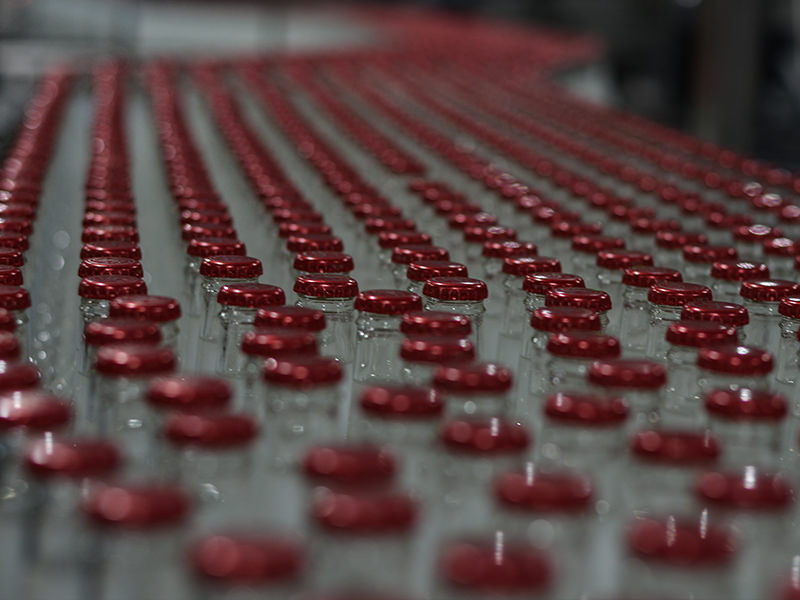 |
|
The hypnotic blur of bottling
|
There’s a bit of a Willy Wonka feel when you enter the new Diageo warehouse in Huntingwood, Sydney.
Except rather than everlasting gobstoppers and scrumdidilyumtious chocoate bars the treats are more adult in their concoction.
Johnnie Walker, Bundaberg Rum, Baileys and Captain Morgan, among the rest of Diageo’s formidable alcoholic brands.
Machines whirl and rotate and fizz and pop. Coloured liquid is squirted into empty bottles and swept down a production line shoulder to shoulder.
Automatic arms grip bottles and attached tops and stickers. Bottles and cans are shunted together, boxed and palletised in a hypnotic blur. Nearly a million litres are produced here every year.
As Diageo’s supply chain manager Graham Wigglesworth walks ATN through the filling lines workers in lab coats and hairnets load empty bottles and engineers monitor screens.
In the space of a minute 1500 cans and 600 bottles will be filled, processed and wrapped on pallets, ready for the next phase of the operation. As enchanting as the production line is, it’s what happens next that we’re really here to see.
Consolidating production
While the Huntingwood site has been around for 25 years, the recent $21.5 million expansion is barely two years old. Vaughan Construction handled the job, which took 20 months.
The expansion added an automated warehouse and distribution area to the footprint.
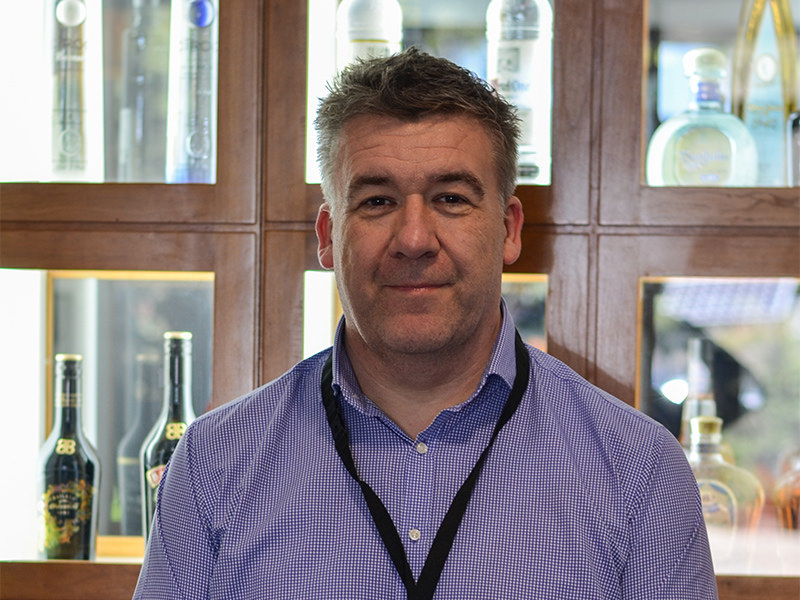 |
|
Diageo Australia supply chain manager Graham Wigglesworth
|
The new warehouse has 26,000 pallet spaces but takes up a relatively modest 5000 square metres, thanks to the double deep, 30 metre high-bay racking, supplied by Colby.
It’s part of Diageo’s goal to reduce its carbon emissions by half, mostly by eliminating transport between Huntingwood and its former warehouse in Erskine Park.
In the two years the warehouse has been in operation Wigglesworth says they’ve done just that. But it’s not just the environment that wins.
Fewer kilometres clocked up by trucks means huge savings for the business and substantially greater efficiencies across the network.
“A big part of that was taking trucks off the road,” says Wigglesworth. We get no rebates or incentives other than being a good corporate citizen, and we’re very proud of that.”
The benefits of getting the Sydney operations all under one roof extend to mitigating Sydney’s notorious traffic, and speeding up the overall delivery of product through the supply chain.
“The more you touch a product, the more chance there is of damage, and the more chance there is of slowing the process down. The less you touch and move around the product the better.”
Previously Diageo used a third party for their warehousing at Erskine Park. Today the change, both in responsibility of storage and in the technology used, couldn’t be starker.
Automated cranes take over
Once the bottling and palletising process is complete the pallets are assigned shelf position automatically, through a management system delivered by Sydney company Paperless Warehousing. “It’s our major system when it comes to stock control,” says Wigglesworth.
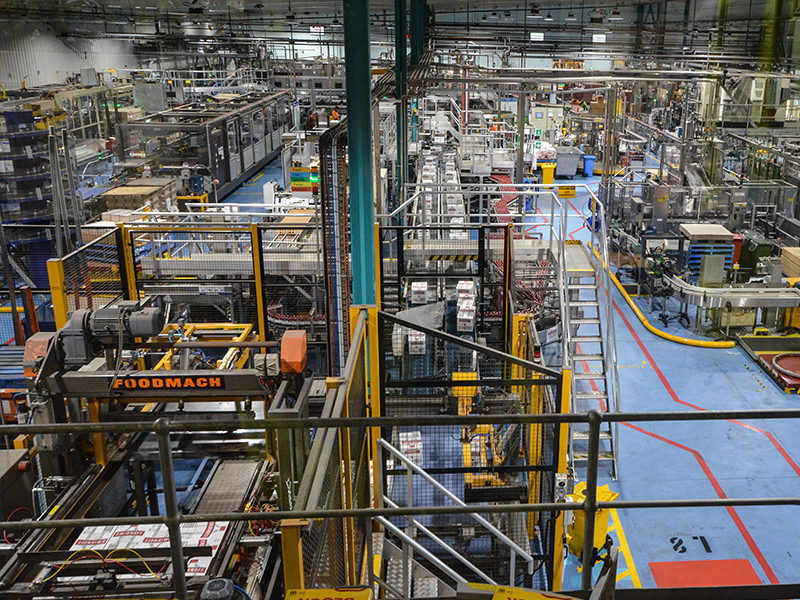 |
|
The Diageo bottling facility that runs alongside the new warehouse at Huntingwood
|
From the production line forklifts carry the pallets to one of six Dematic RapidStore 1224 Storage Retrieval Machines.
The machines are essentially cranes that convey the pallets along the high-bay aisles and store them in their designated spot.
The storage spots are worked out automatically by the management system based on FIFO and age of stock.
Forklift drivers consult a screen on their forklift that tells them which retrieval machine to take the pallet to.
“The cranes are picking FIFO on a batch level, so as we put batches in the cranes are automatically choosing the oldest stock.”
The cranes are smart in other ways, too. They use a defrag system that means the cranes are continually shifting stock to have it put in the optimal position.
“When the cranes aren’t busy they move fast-moving stock forward, to ensure that when they are busy they don’t have to travel as far to get it,” Wigglesworth explains.
“We also spread the risk across the six cranes, so if at any point we were to lose a crane we would have stock available across the other ones.”
After picking up a pallet from the palletiser the driver will scan the pallet and see on his screen which crane to take the pallet to.
The driver then scans after it’s been dropped to the crane, at which point the crane takes over.
Wigglesworth says that while using regular forklifts is working well they’re investigating the possibility of introducing Automated Guided Vehicles (AGV) in the future.
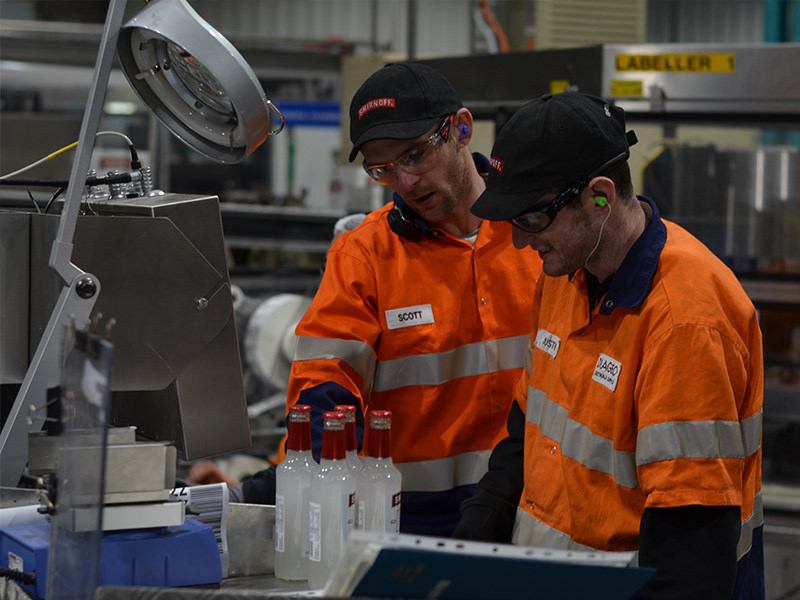 |
|
Workers on the bottling line at Huntingwood
|
One of the many advantages of using automated machines is the warehouse can run 24 hours a day, seven days a week. They also work in the dark, which saves money on electricity.
“The cranes know to place stock in different locations depending on temperature. We have some products, such as Baileys, that are temperature sensitive. So the cranes obey a set of rules.”
Wigglesworth says the challenge lies in the end-point delivery to customers. “What makes it difficult is trying to spread the work across the day, because customers usually want their stock at the same time.”
Going with the flow
“A lot of people don’t realise this is all happening in Sydney,” says Wigglesworth. “They assume the product is all imported. It’s not.”
Eighty per cent of what Diageo send out to customers – including Coles, Woolworths and Australian Liquor Marketers (ALM) – is bottled or canned at the Huntingwood facility. Around 20 per cent comes in fully imported.
A busy day will see up to 70 B-doubles arrive and pick up stock, mostly using Toll, Woolworths Primary Freight and VISY Logistics.
“In this world it’s all about hitting timeslots,” says Wigglesworth.
“You need to know how you’re going to use your labour to deliver your services. We have to hit customers’ timeslots. If something goes wrong along the supply chain there’s a domino effect.”
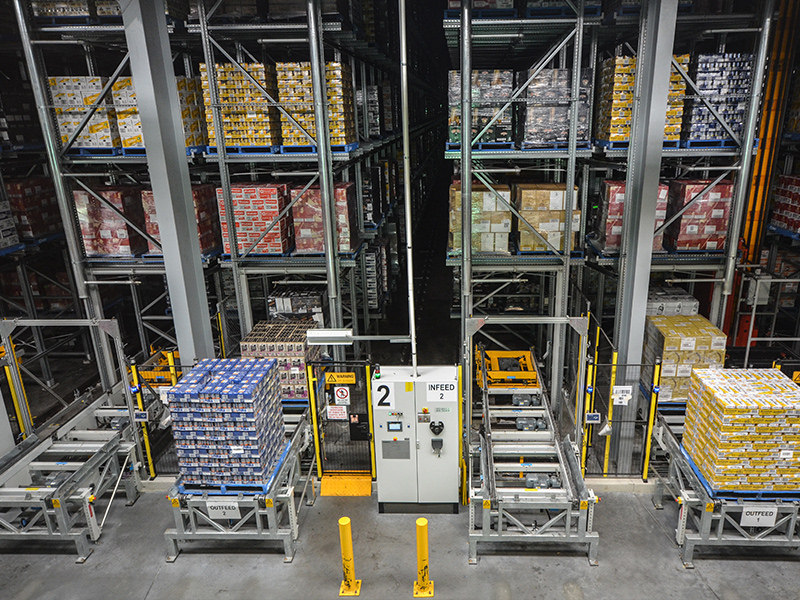 |
|
The automated storage warehouse at Huntingwood showing infeeds for the pallets
|
From the out-feed pallets are wrapped, and from the wrappers they go straight onto trucks.
There is a large undercover area for storage of imported stock awaiting transport to customers, and all trucks follow a one-way flow when entering and leaving the facility.
What’s noticeable is that the entire operation takes up only a small amount of space. It’s a very short run from production line to warehouse to wrappers to trucks.
Diageo appears to be mimicking its overall frugalness of transport even within the confines of the warehouse. It’s a fine example of trimming the fat, making use of space and using only what need.
Results that speak volumes
There were three keys goals to achieve with extending the footprint of the Huntingwood facility, and Wigglesworth says Diageo has achieved them all.
The first was to improve customer service. Wigglesworth says surveys show that’s been achieved. The second was to streamline the supply chain.
By taking trucks off the road, reducing the handling of the stock, cutting out the 3PL and having the production, warehousing and distribution all happening under the one roof the entire operation is faster and more efficient.
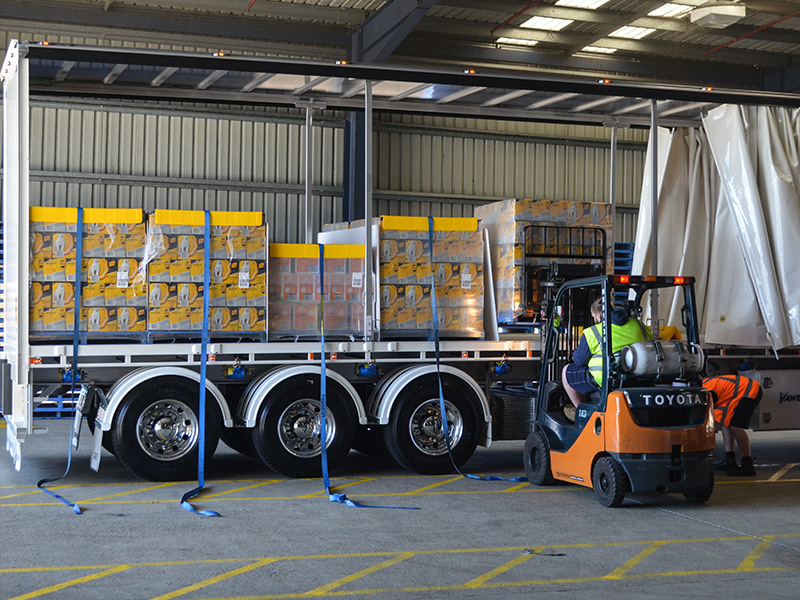 |
|
Loading at Diageo’s Sydney warehouse
|
“It streamlines everything. You’ve got to move product through your supply chain fast. That way you reduce touch points and there’s less chance of damage.”
The third was to save money, and Wigglesworth says they’ve seen that happen.
“The warehouse has delivered all of the numbers we wanted it to. We made a $21.5 investment, and that investment is basically underwriting all the things that were in the capital expenditure. We needed to get faster, more agile, more responsive, and we’ve done all that. That’s what I’m proud of.”
The improvements aren’t stopping, either.
“We’re making a $7 million investment in a new filler right here. We continue to invest in the business.”
Right here means the bottling plant where the magic keeps happening. Rum arrives from Bundaberg in tankers and gets drained, bottled, sealed, labelled, boxed, wrapped, stored and sent out in a staggering display of precise automation.
It’s all watched over from an upstairs office with a view to a colourful wonderland. Wigglesworth gazes over the facility with pride and grins.
“Being a kid you watch programs about how things get made. Well, here it’s the same. It’s big boys toys.”
Check out the full feature in the November edition of ATN.

